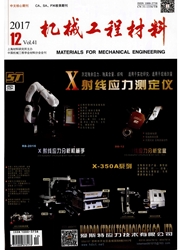

 中文摘要:
中文摘要:
采用射频磁控溅射法在Si(100)基片上首先沉积了厚度40nm的非晶钛-铝薄膜,然后在其上又原位生长了厚度100nm的铜薄膜,制备了铜膜/钛-铝膜/硅试样;对试样分别在400~800℃内进行真空退火处理,用原子力显微镜、X射线衍射仪、四探针测试仪对试样的表面形貌、结晶状态及方块电阻进行了分析。结果表明:当退火温度低于750℃时,试样表面平整,表面粗糙度和方块电阻均较小且基本不随退火温度的升高而改变,此时,非晶钛-铝薄膜能够起到阻挡铜向硅中扩散的作用;当退火温度在800℃时,试样的表面粗糙度和方块电阻急剧增大,此时,非晶钛-铝薄膜已经不能起到阻挡层的作用。
 英文摘要:
英文摘要:
An amorphous Ti-Al film, on which Cu film was in situ prepared, was deposited on the Si (100) substrate by radio frequency (RF) magnetron sputtering to fabricate Cu(100 nm)/Ti-Al (40 nm)/Si samples. The samples were annealed in the temperature range from 400℃ to 800℃ in high vacuum and then characterized by atom force microscopy (AFM), X-ray diffraction (XRD), and four-point probe methods. The results show that, when the annealing temperature was below 750 ℃, the sample surface was smooth, and the surface root mean square roughness (Rma) and sheet resistance were smaller and did not change with the annealing temperature, and the amorphous Ti-Al film could prevent the interdiffusion between Cu and Si. However, for the sample annealed at 800 ℃, the surace root mean square roughness and sheet resistance increased dramatically, and Ti-Al film could not be used as an effective barrier anymore.
 同期刊论文项目
同期刊论文项目
 同项目期刊论文
同项目期刊论文
 期刊信息
期刊信息
